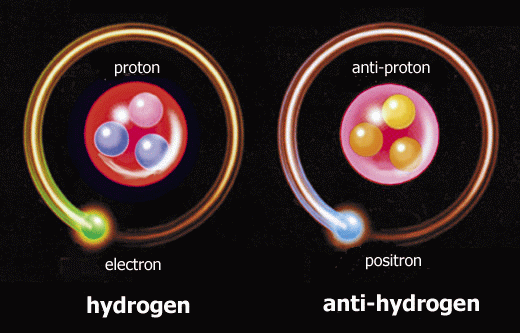The Antimatter Factory: Part 2 - Why do we investigate antimatter?
In Part I of this series investigating the Antimatter Factory at CERN and its research to the general public, I introduced the readers to antimatter and its properties. Read the post here: https://steemit.com/science/@cgrech/the-antimatter-factory-part-1-what-is-antimatter
In this post, I will delve deeper on the reasons why we study antimatter, and what are the possible applications of antimatter, if they ever become viable.

Why is there no antimatter in the universe?
The main question that many researchers ask is: why is there no antimatter in the universe? Theoretically, the Big Bang should have created equivalent amounts of matter and antimatter in the early universe. However, everything we see around us is made almost entirely of matter. Relatively, there is not much antimatter to be found. Something must have happened to tip the balance. The existence of the universe today is due to a difference between matter and antimatter, which we do not yet know how to explain. In a sense, we can say that we are the leftovers from the last annihilations that happened between matter and antimatter, and if there were no difference between the two, the universe would be full of light.
One of the greatest challenges of the Antimatter Factory experiments is to figure out what happened to the antimatter, by looking for an asymmetry between matter and antimatter. This makes antimatter one of the biggest mysteries in physics!
Applications of antimatter
In terms of applications of antimatter, we know that a quarter of a gram of antimatter reacting with a quarter of a gram of matter results in an annihilation with an energy equivalent to five kilotons of TNT. So why can't we use antimatter as a source of clean energy? The issue is that antimatter is one of the most expensive substances to exist, with NASA estimating its cost to 100 million dollars per 1 mg. Such a high cost is due to how difficult it is to produce it.
This does not mean that we can entirely exclude antimatter from being present in the environment around us. Some elements decay to antimatter particles naturally. For example, bananas emit around fifteen positrons (anti-electrons) in one day!
So why do we need an Antimatter Factory?
In the researchers' quest for discovering more properties on antimatter, they perform experiments on antihydrogen and compare these atoms with hydrogen atoms. In order to produce a neutral antihydrogen atom, one needs an antiproton and combine it with a positron. The positron is normally obtained from a sodium-22 source, however the most difficult part is obtaining the antiprotons. I will explain the procedure that is carried out at the Antimatter Factory in the next post!

Credit: https://www.zmescience.com/science/physics/coldest-antimatter-312321/
Up next: How do we produce antiprotons?
External source: Tara Shears, TEDx Liverpool talk:
Such a pleasure to read a finely crafted post.